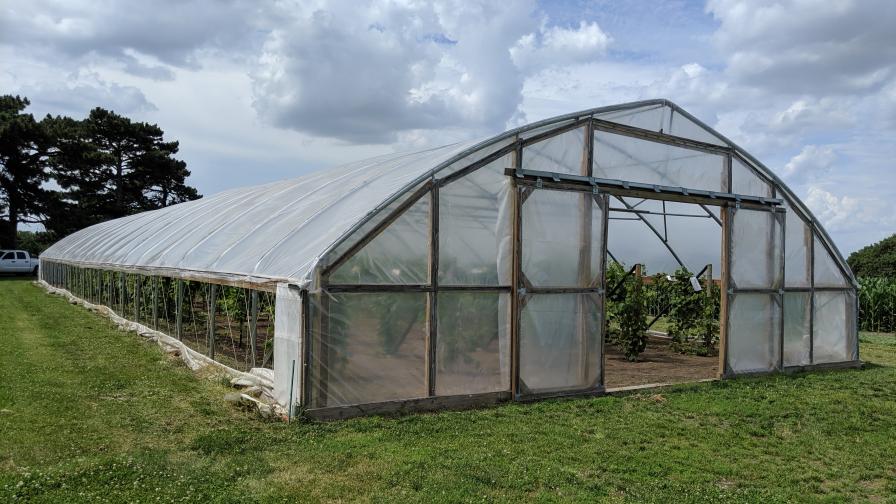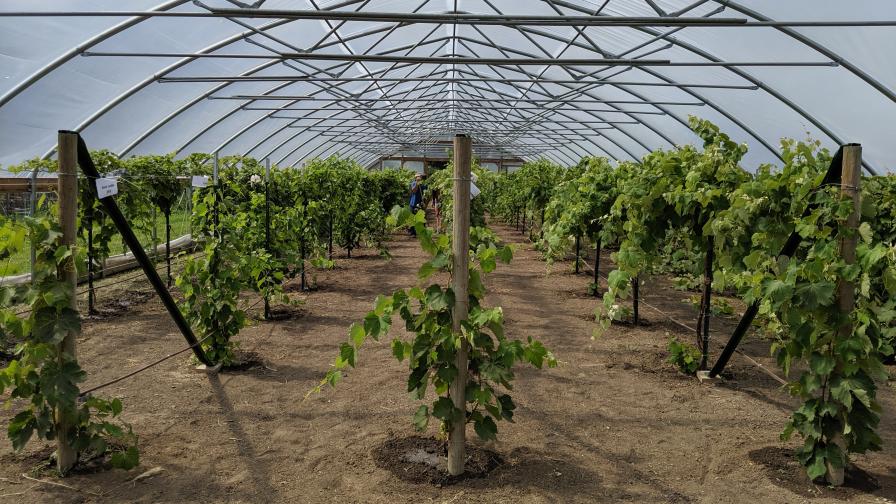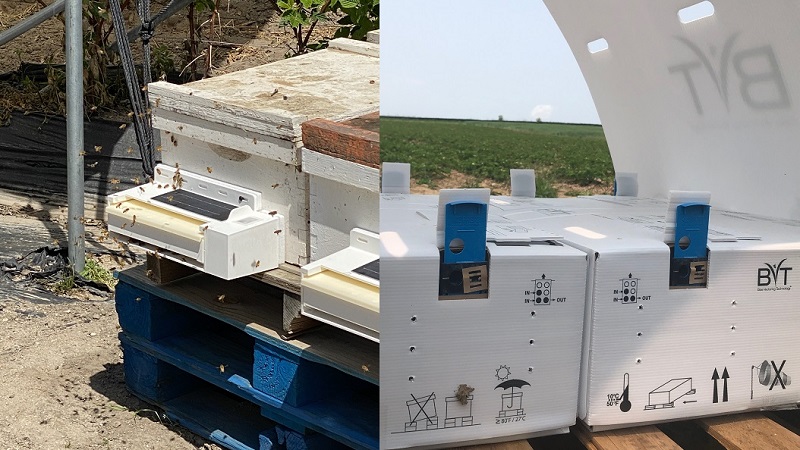Table Grapes Grown in High Tunnels Flourish In the Midwest

The 34 x 129’ high tunnel, constructed from a a kit, provided excellent insect and disease protection for a variety of table grapes.
Photo courtesy of University of Nebraska

Table grape production in Nebraska has been attempted, but harsh growing conditions hamper the ability to grow high-quality fruit that consumers have come to expect in markets. Because the grape berries are easily damaged by various environmental factors, considerable labor expenses to remove damaged berries and thus provide marketable clusters have made field production unprofitable. We therefore established a project to attempt to produce a quality product by growing table grapes under protection in a high tunnel.
The tunnel was constructed by University of Nebraska Viticulture Program personnel from a kit purchased from Hummert International. Five table grape cultivars were included to determine suitability for production: ‘Canadice’, ‘Marquis’, ‘Mars’, ‘Somerset Seedless’,
and ‘Thomcord’.
Bare-root plants were planted in spring 2017 into well-drained existing soil that had corn in the previous two growing seasons. Rows were oriented north/south while employing a bilateral high cordon trellis system. Row width was 7 feet, and within-row spacing was 7.5 feet. Cluster removal was practiced in the first two years to prevent fruiting, aiming for first harvest in 2019.

The high tunnel table grapes were cut back to the ground after the first year of growth (2017) and were highly vigorous in 2018, quickly reaching the cordon wire.
Photo courtesy of University of Nebraska
ULTRACLEAN VINES
Surprisingly, minimal disease problems were encountered, with minor fungal issues managed by use of a standard fungicide spray program. Insect incidents were also infrequent, with Japanese Beetles controlled with spot applications of carbaryl. No winter damage was apparent following exterior low temperatures of -12°F (Jan. 1, 2018) and -4°F (Feb. 26, 2019). Temperatures in the high tunnel never dropped below
0°F in either winter.
Fruit set in the spring of 2019 was excellent. ‘Thomcord’, ‘Mars’, and ‘Marquis’ produced attractive clusters as they developed and approached veraison. Harvest generally commenced when Brix levels reached 16 to 18. Highly marketable clusters were produced with yields exceeding 20 to 30 pounds per plant on some cultivars (see chart below).
Furthermore, ‘Mars’ produced an average of 35 pounds/plant in the second year, com-pared to 32 pounds/plant for ‘Thomcord’ and 21 pounds/plant for ‘Somerset’. ‘Marquis’ and ‘Canadice’ had low yields in 2019 because of raccoon damage but in 2020 had per plant yields of 13 and 20 pounds, respectively.
In general, yields were down in 2021 with ‘Mars’ producing 34 pounds/plant, ‘Somerset’ 21 pounds, ‘Thomcord’ 18 pounds, ‘Canadice’ 12 pounds, and ‘Marquis’ producing 10 pounds/plant. The average number of clusters on each plant in 2021 vs 2020 was similar but less fruit was produced, indicating slightly lower cluster weights in 2021. We attribute this difference to more aggressive pruning in the winter of 2021.
PROFIT POTENTIAL
In general, larger and heavier clusters are ideal for marketing table grapes to the public. Berry samples were collected at the time of harvest, when Brix, pH, and titratable acidity (TA) were measured.
As expected, there were clear differences among cultivars in each of the three years. However, when examining individual cultivars, the change from one year to the next saw only small changes of Brix, pH, and TA.

In each of the three harvest years it was noticed that not all clusters ripened at the same time, thus providing an opportunity for a grower to harvest over the course of several weeks. This would extend the timeframe to send fruit to the market.
Whether Nebraska grape growers want to produce a high-value crop — such as table grapes — or a cultivar of wine grape not typically grown in the area, the risk of winter damage, late spring freeze, hail, or other natural causes is highly likely.
While expensive, protecting susceptible grape cultivars with a high tunnel may prove to be a viable option for many Midwestern grape growers.









